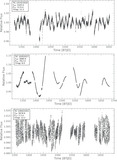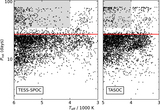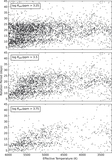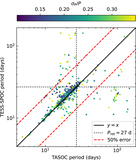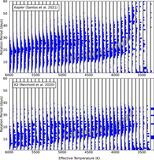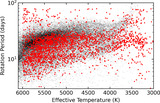Image Details

Caption: Figure 13.
The detectability of rotation across APOGEE temperature and metallicity. The color bar corresponding to the detection fraction has a maximum value of 70%. We preferentially detect rotation in cool stars, which have deeper convective envelopes and are more active. When the detectability drops off as a function of temperature, we see a weak trend of increasing detectability with increasing metallicity. This may be due to metallicity increasing the convective depth at fixed temperature. It may also be an age effect, as young, active stars tend to be more metal-rich.
Copyright and Terms & Conditions
© 2024. The Author(s). Published by the American Astronomical Society.


